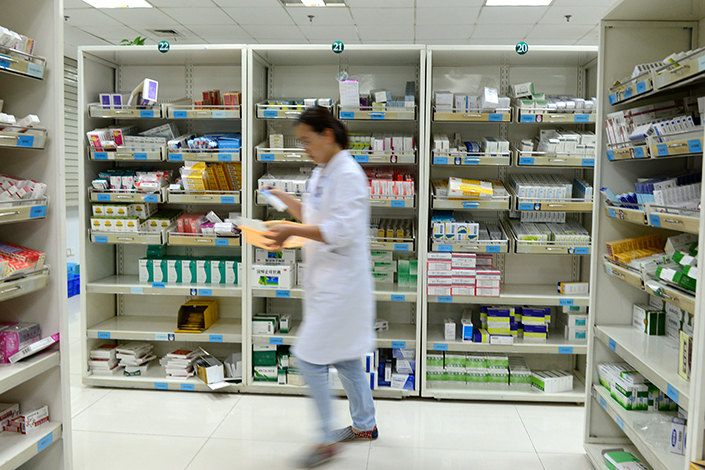Drug Giants Swallow Price Cuts to Get Into China

(Beijing) — Global pharmaceutical giants such as GlaxoSmithKline PLC (GSK) and Novartis AG have agreed to cut prices in exchange for getting more of their products added to China’s catalog of drugs eligible for partial reimbursement.
The Ministry of Human Resources and Social Security added 36 drugs to the list after three months of price negotiations with pharmaceutical companies. Most of the drugs added to the list are used to treat cancer or cardiovascular disease. At their previous prices, the drugs were difficult for either patients or the government’s medical insurance fund to afford.
The negotiations led the retail prices of the 36 drugs to be cut by 44% on average, according to a ministry statement released Wednesday.
“The drugmakers value the huge China market, which was our largest bargaining chip in the negotiation,” said Xu Yanjun, deputy director of the ministry’s Social Security Center.
The newly approved drugs include GSK’s breast cancer treatment lapatinib, sold as Tykerb, and its depression drug paroxetine, branded as Seroxat CR. The ministry also approved Novartis’ ranibizumab injection for visual impairment, which is marketed as Lucentis.
The catalog also now includes three AstraZeneca PLC products: heart attack tablets ticagrelor, sold as Brilinta; breast cancer injection fulvestrant, branded as Faslodex; and Seroquel XR, a quetiapine fumarate drug for psychological disorders.
Swiss drugmaker Roche AG had four of its cancer treatments drugs added to the list: trastuzumab, known as Herceptin; rituximab, or Mabthera; the bevacizumab injection Avastin; and erlotinib, which is branded as Tarceva.
Once a drug makes it onto the list under the category of partially reimbursable drugs, the government’s medical insurance program picks up about half the cost, though the specific amount varies province to province, a medical insurance expert told Caixin.
Being included on the list helps drive sales, offsetting the revenue that drugmakers lose from the price cuts, said Zhang Jinghan, a pharmaceutical industry analyst at CEBM Group, a subsidiary of Caixin Insight Group.
“For example, ever since Shijiazhuang Pharmaceutical Group’s NBP (a stroke treatment drug) was listed in 2009, its sales have grown by over 50% each year,” said Zhou Jing, an analyst at Guolian Securities.
Other Chinese pharmaceutical giants have had products, including drugs based on traditional Chinese medicine, get partially covered after they got added to the catalog. One example is Yifan Pharmaceutical Co. Ltd.’s blood cancer drug Huangdai.
Of the newly added drugs, 31 were based on Western pharmacology and five were made from Chinese herbs.
Contact reporter Coco Feng (renkefeng@caixin.com)

- 1Cover Story: Chinese Medicine Injections Face Rigorous Regulation for the First Time
- 2France to Receive New Panda Pair Under Renewed 10-Year Deal With China
- 3Wingtech Rebuts Nexperia Claims as Control Fight Threatens Global Chip Supply
- 4 China Flu Cases Surge to Highest Level Since 2022
- 5BYD Overhauls Payment System as China Tightens Oversight
- 1Power To The People: Pintec Serves A Booming Consumer Class
- 2Largest hotel group in Europe accepts UnionPay
- 3UnionPay mobile QuickPass debuts in Hong Kong
- 4UnionPay International launches premium catering privilege U Dining Collection
- 5UnionPay International’s U Plan has covered over 1600 stores overseas





